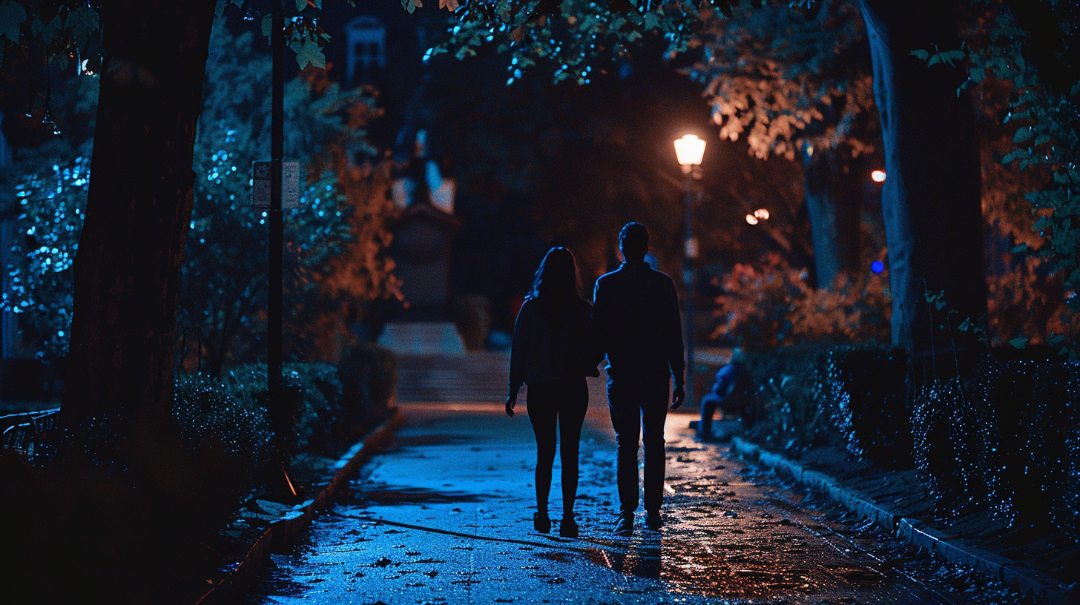Men & Women Perceive The Night Differently, Compelling Heat Maps Reveal
By Mikelle Leow, 20 Feb 2024

Image generated on AI
When the sun goes down, some feel comforted by the thought of strolling home and being able to wind down afterward. Others, not so much. A recent study led by Brigham Young University’s public health professor Robbie Chaney has brought to light the stark disparities in how men and women perceive their nighttime surroundings, and the difference is, well, night and day.
Drawing on a diverse group of nearly 600 participants—56% female and 44% male—the research involved showing them images of various campus locations at four Utah universities during nighttime. Participants were then asked to interact with these pictures by clicking on areas that drew their attention, imagining themselves walking through these spaces. This allowed researchers to gather data on where participants’ gazes lingered, translating these focus points into gender-based heat maps about how both sides navigate their way back after dark.
The results were telling: women’s eyes danced around the periphery, alert to potential safety hazards like bushes or poorly lit areas, while men were more likely to keep their eyes on the prize—their destination—and were drawn to more direct elements of the path ahead, such as lights or specific objects.

Image via Chaney et al / Violence and Gender (CC BY 4.0)
This pattern of vigilance illuminates the deeper, often subconscious safety strategies employed by women in public spaces, especially in the context of walking alone at night.

Image via Chaney et al / Violence and Gender (CC BY 4.0)
The study’s findings, published in the Violence and Gender journal, underscore the need for designers to take into account these differing perspectives and concerns when planning and creating spaces.
Expressing surprise at the pronounced differences, Chaney shares, “The resulting heat maps represent perhaps what people are thinking or feeling or doing as they are moving through these spaces… We expected to see some differences, but we didn’t expect to see them so contrasting. It’s really visually striking.”

Image via Chaney et al / Violence and Gender (CC BY 4.0)
“This project has been a fantastic conversation starter to bring awareness to lived experiences,” says co-author Alyssa Baer. “My hope is that in having concrete data we are able to start conversations that lead to meaningful action.”
As Chaney poignantly notes, the ultimate goal is to build a world where the safety considerations that currently differentiate men’s and women’s experiences become a thing of the past.
“Why can’t we live in a world where women don’t have to think about these things? It’s heartbreaking to hear of things women close to me have dealt with,” Chaney ponders. “It would be nice to work towards a world where there is no difference between the heat maps in these sets of images. That is the hope of the public health discipline.”
[via Boing Boing and Phys.org, images via various sources]





